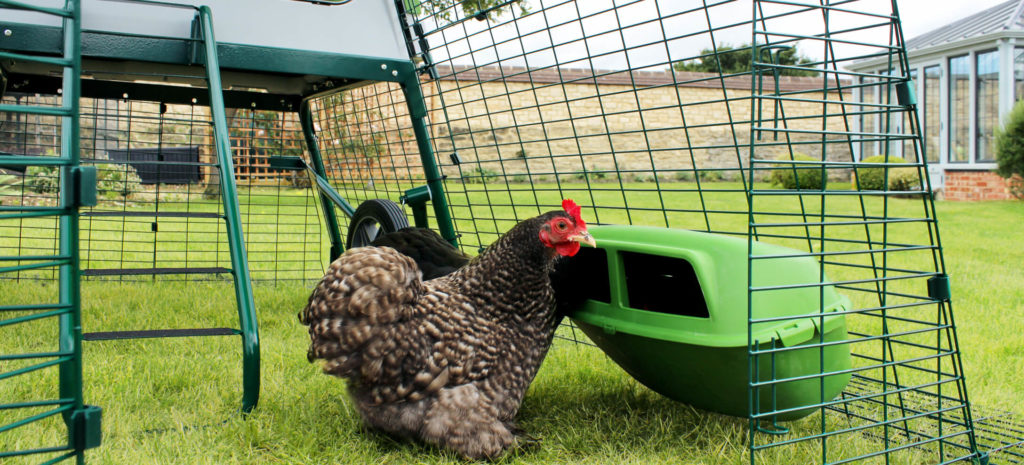What You need to Know: Avian Flu 2020

Avian Flu is an issue that affects all chicken keepers. Efforts to contain the virus never result in its eradication, and the fact that it is not currently in the headlines doesn’t mean it’s disappeared. Many countries are enduring the avian flu version of lockdown in certain regions this year, and people are being told to take appropriate measures.
There have been local outbreaks in the UK, Germany, Denmark and the Netherlands in the second half of 2020. The current avian flu strain in Europe is a low pathogenic avian influenza, meaning that it is highly unlikely to spread from its bird hosts to humans. The ghost of a bird flu pandemic cannot be ignored, though.
The outbreak is thought to have originated in western Russia and Kazakhstan, following the same pattern as the avian flu outbreaks in the summers of 2005 and 2016. In both previous cases, epidemics soon spread to northern and eastern Europe.
This article describes the impact of pathogenic avian influenza, how it spreads, and what chicken keepers can do to prevent it, based on government guidelines and other practical measures.
What is avian flu?
As its name suggest, the avian flu virus is a form of influenza (flu) biologically adapted to bird hosts. Bird flu is not a virus specific to chickens and poultry, and in theory any bird, wild or domestic, can be infected. The reservoir of avian influenza is, indeed, flocking wild birds such as geese and gulls.
Symptoms of avian flu in chickens
Chickens with avian influenza will display various symptoms. They may be less active than usual, and will lose their appetite and show signs of nervousness. Their egg production will drop, and eventually their combs and wattles will look swollen, with a blue discoloration. Other avian influenza symptoms in poultry include coughs, sneezes and diarrhea. Unfortunately, many of these bird flu symptoms are associated with other ailments, too, so a vet will need to make the diagnosis.
It can take 14 days for an avian influenza outbreak to spread throughout a flock. Some infected birds may exhibit no signs, even though they are still potential virus carriers. Others may ail and die very quickly.
How to treat avian flu in chickens
You can reduce the risk of avian influenza in your poultry by following the latest guidelines issued by Defra and the government. Vaccination of a flock at risk from the avian influenza virus is the only method of prevention. If avian influenza affects a flock, the flock has to be put down. Links to the latest US government advice is given at the end of this article.
How to protect your chickens
- Place your birds’ food and water in fully enclosed areas that are protected from wild birds, and remove any spilled feed regularly.
- Keep your equipment clean and tidy and regularly disinfect hard surfaces.
- Clean footwear before and after visiting your birds.
- Ensure clothing that you use when handling your chickens is washed after contact.
- Use run covers to protect your chickens’ enclosure from wild bird droppings.
- Keep moveable coops in the same place – if coops are moving to fresh ground there is more chance of coming into contact with wild bird faeces.
- Keep a close eye on your chickens. If you have any signs of illness, seek advice from a qualified vet.
Guidelines from the CDC
If you are concerned your chickens may have been exposed to the the Avian Flu please follow these guidelines here to protect yourself at: https://www.cdc.gov/flu/avianflu/avian-in-humans.htm
CDC currently recommends a neuraminidase inhibitor for treatment of human infection with avian influenza A viruses. CDC has posted avian influenza guidance for health care professionals and laboratorians, including guidance on the use of antiviral medications for the treatment of human infections with novel influenza viruses associated with severe disease. Analyses of available avian influenza viruses circulating worldwide suggest that most viruses are susceptible to oseltamivir, peramivir, and zanamivir. However, some evidence of antiviral resistance has been reported in Asian H5N1 and Asian H7N9 viruses isolated from some human cases. Monitoring for antiviral resistance among avian influenza A viruses is crucial and ongoing.
Although avian influenza A viruses usually do not infect people, rare cases of human infection with these viruses have been reported. Infected birds shed avian influenza virus in their saliva, mucous and feces. Human infections with bird flu viruses can happen when enough virus gets into a person’s eyes, nose or mouth, or is inhaled. This can happen when virus is in the air (in droplets or possibly dust) and a person breathes it in, or when a person touches something that has virus on it then touches their mouth, eyes or nose
The best way to prevent infection with avian influenza A viruses is to avoid sources of exposure. Most human infections with avian influenza A viruses have occurred following direct or close contact with infected poultry.
This entry was posted in Chickens